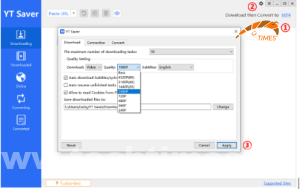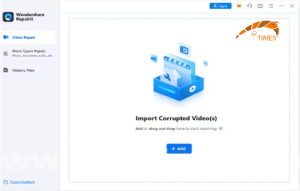A Look into How Communication Between Companies Has Modified Over Time

Within the realm of digital companies and software program design, few ideas are as central and impactful as Utility Programming Interfaces (APIs). As the first mechanisms for enabling software program parts to speak, APIs have undergone vital transformations by way of design, construction, and performance. This text traces the evolution of API design patterns, emphasizing the variations between two modern titans in this space: gRPC vs REST.
The Humble Beginnings: Early Days of APIs
In the course of the earlier days of the web, APIs have been fairly simple. Most interactions between software program parts have been facilitated by means of Easy Object Entry Protocol (SOAP). SOAP, an XML-based messaging protocol, laid the groundwork for standardized communication between purposes.
Nevertheless, the verbose nature of XML and the in depth specs SOAP required led builders to hunt options, paving the best way for Representational State Switch (REST).
REST: The Reigning Champion
REST heralded a major shift within the API panorama. As an alternative of specializing in actions, as SOAP did, REST was resource-oriented. It utilized commonplace HTTP strategies like GET, POST, PUT, and DELETE to carry out CRUD operations. The REST architectural type emphasised scalability, statelessness, and a client-server mannequin. Because of this, RESTful APIs shortly turned the de facto commonplace for web companies, particularly with the rise of JSON as a light-weight information interchange format.
Enter gRPC: Tailor-made for Trendy Wants
Nevertheless, as distributed techniques grew in complexity and microservices turned the norm, REST began to indicate its limitations, particularly regarding effectivity, streaming, and error dealing with. This paved the best way for gRPC.
Developed by Google, gRPC is a distant process name (RPC) framework that makes use of HTTP/2 for transport and Protocol Buffers (protobuf) as its interface definition language. This mixture leads to a number of benefits:
- Effectivity: Protocol Buffers are each easier and extra environment friendly than JSON or XML.
- Streaming: gRPC helps bi-directional streaming, permitting for extra dynamic information flows.
- Deadlines/Timeouts: Constructed-in assist ensures that calls don’t hold indefinitely.
- Stream Management: It offers superior movement management of information between the consumer and server utilizing the HTTP/2-based transport.
- Pluggable: gRPC is designed to assist pluggable authentication, load balancing, retries, and so forth.
Whereas each REST and gRPC have their deserves, some distinct variations set them aside:
- Information Format: Whereas REST usually makes use of JSON for information switch, gRPC leans on Protocol Buffers, resulting in extra compact and quicker serialization/deserialization.
- Streaming: gRPC’s assist for bi-directional streaming is a stark distinction to REST, which is inherently request-response in nature.
- Efficiency: gRPC, with its HTTP/2 transport layer, typically outperforms RESTful companies, particularly in situations that contain massive volumes of information or require real-time communication.
Microservices and the Want for Environment friendly Communication
As monolithic architectures step by step gave solution to microservices, the significance of environment friendly inter-service communication turned paramount. Microservices architectures break up purposes into smaller, impartial companies that carry out particular enterprise features. These companies want to speak steadily, shortly, and reliably.
In such a setup, REST’s simplicity is each its energy and its limitation. Its statelessness ensures that every service can function independently, however it may possibly additionally introduce overhead, particularly when companies require steady and frequent updates.
gRPC’s Strengths in Microservices
gRPC was developed with the challenges of microservices in thoughts. Right here’s the way it caters to those particular wants:
Language Agnostic: With Protocol Buffers, gRPC presents language-agnostic schema definitions, enabling companies written in several languages to speak seamlessly.
Deadlines/Timeouts: This characteristic ensures that assets aren’t tied up indefinitely on account of failed or sluggish service calls. In a microservices setup, the place Service A would possibly rely upon a response from Service B to serve a request, that is essential.
Stream Management: By leveraging HTTP/2, gRPC permits for extra superior movement management between companies utilizing ideas like streams and window sizes. This ensures optimum useful resource utilization and higher communication patterns, particularly in data-intensive situations.
Error Dealing with: gRPC has wealthy standing codes, which permit companies to grasp the precise nature of any errors that happen, facilitating extra exact error dealing with and restoration mechanisms.
Sensible Implementation Challenges and Concerns
Whereas gRPC presents many benefits, it isn’t a silver bullet. Its adoption introduces new challenges:
Browser Assist: Whereas HTTP/2 has widespread browser assist, gRPC’s full characteristic set isn’t natively supported in all browsers.
Studying Curve: For groups acquainted with REST, there’s a studying curve concerned in mastering gRPC, from defining Protocol Buffers to understanding the nuances of its RPC paradigm.
Tooling: REST’s maturity signifies that there’s a plethora of instruments accessible for testing, documentation (like Swagger), and monitoring. gRPC’s ecosystem is rising however isn’t as wealthy but.
REST’s Continued Relevance
Regardless of gRPC’s rising star, REST isn’t going wherever. Its simplicity, statelessness, and huge adoption imply it’s typically the only option for public-facing APIs and web companies, particularly when fast improvement and broad compatibility are priorities.
Caching: One in all REST’s vital benefits is its compatibility with HTTP caching mechanisms. That is invaluable for public-facing companies the place the identical assets are fetched repeatedly.
Ubiquity: Virtually each software program developer is acquainted with the HTTP verbs and standing codes, making RESTful APIs comparatively intuitive.
Flexibility: REST doesn’t tie you to a particular information format or transport protocol. Whereas JSON over HTTP is frequent, RESTful companies can make the most of XML, HTML, and even Protocol Buffers if desired.
For a lot of organizations, the longer term may not be a matter of selecting between gRPC and REST however leveraging each. Exterior, public-facing companies would possibly nonetheless be RESTful on account of their simplicity and broad assist, whereas inter-service communication inside a microservices ecosystem would possibly lean on gRPC for effectivity and efficiency.
Conclusion
The evolution of API design patterns displays broader shifts on the earth of software program improvement. As techniques have turn out to be extra interconnected and sophisticated, the calls for on APIs have equally advanced. Whereas REST stays a strong and broadly used alternative, gRPC addresses a number of ache factors that trendy purposes face, particularly within the realm of microservices and real-time information.
As builders, understanding the nuances and strengths of each paradigms permits for knowledgeable decision-making and the creation of resilient, environment friendly, and scalable techniques. Because the digital panorama continues to evolve, one can solely anticipate additional innovation on the earth of API design.
Hashtags: #Communication #Companies #Modified #Time
Keep Tuned with TechTimes24.com for extra Tech news.


